Photographs: Sanjay Austa
When photographer Sanjay Austa knocked on the doors of the ominously named Widow's Colony in Delhi, the residents -- all survivors of the 1984 anti-Sikh riots -- assumed that he had come to do a routine story.
But when he asked the women if he could talk to their children instead, they were taken aback.
For residents of this colony in Trilokpuri, west Delhi, are used to talking to inquisitive journalists, who often ask them to recount details of the communal carnage that had taken away their beloved husbands.
They are also used to the sudden media attention every year around the time of the anniversary of the riots, or when a senior leader is rapped on charges of inciting them 26 years ago. But their children had so far remained beyond the spotlight of journalistic curiosity.
In the picture: Manjeet Singh was three years old when his father was killed by a mob in Bhanjanpura.
The mob descended on their house and dragged his father out.
The killers then threw Manjeet's 10-year-old brother on the burning pyre. But someone from the mob rescued him.
His father was taken away, his body was never found.
They lost their childhood to the 1984 riots
Image: Paramjit KaurPhotographs: Sanjay Austa
"But no one pays any attention to the children of these widows. Perhaps because the children don't appear to be as interesting as victims, or maybe because they were too young at that time to give any gory account of the riots," he adds.
The vivid images of From Lost Childhood to Uncertain Future, his photo documentary, starkly outline the stories of children "who grew up in the shadow of the riots. These children were newborns or only a few years old or in their mother's womb when they lost their fathers, brothers and uncles," says Austa.
In the picture: Paramjit Kaur's mother was 7 months pregnant with her when her father was killed in Sultanpuri.
She says she couldn't see her mother grieving, so she never asked her about her father.
After their son died and Paramjit's mother gave birth to a girl child, her in-laws didn't want her.
However, her grandparents have been squabbling with her mother for their share in the government's compensation after Paramjit's father's murder.
They lost their childhood to the 1984 riots
Image: Inderjeet SinghPhotographs: Sanjay Austa
While working on the photo documentary, Austa discovered that the riots had not only left an indelible scar on the minds of the survivors, it had also altered social and financial equations forever for the bereaved families.
In the picture: Inderjeet Singh lived in the Rakabganj gurdwara in New Delhi for a year before his mother was rehabilitated.
He studied till Class 6 but like most riot- affected children, he had to give up his studies.
He began to learn carpentry when he was 11 years old. Today he works as a bus driver.
They lost their childhood to the 1984 riots
Image: Davinder SinghPhotographs: Sanjay Austa
"Some of the widows remarried and their children from the first marriage were often neglected or alienated," he adds. "All these children had a difficult childhood and it showed."
"As children, they either dropped out of schools or had to help their mother supplement the family income," reveals Austa. "Today, more than 60 percent children born in the wake of the 1984 riots are either drug addicts, or unemployed or involved in petty crimes."
In the picture: Davinder Singh was three years old when his father was killed by a mob in Trilokpuri.
His mother remarried and he and his two brothers grew up with their maternal grandmother.
He earns 60 rupees a day as a cable guy.
His grandmother still supports him and his brother.
They lost their childhood to the 1984 riots
Image: Tripal SinghPhotographs: Sanjay Austa
"I made enquiries and found out that these were people who were born during the riots. Most of them were school dropouts and were unemployed. Some of them were clearly on drugs," he says, explaining how he chanced upon the unusual subject.
In the picture: Tripal Singh was 11 years old when his father was killed in Nandnagri.
He used to run a small dhaba and Tripal would help him after school.
Tripal was in a bus with his cousin when the riots broke out. He had a turban then and he remembers being slapped by strangers on the way.
Someone warned him not to travel any further.
He was given shelter by a Hindu family. He hid for three days and after the riots found that his father's dhaba had been burnt down.
They never found his father's body.
They lost their childhood to the 1984 riots
Image: Gurmeet Singh, centrePhotographs: Sanjay Austa
"I am not really comfortable with the idea of shooting someone on the street and not having anything to do with him or her later. The subjects I choose must have an interesting story to tell. I try and tell the story through pictures," he says.
In the picture: Gurmeet Singh was 10 years old when his father and 18-year-old brother were killed in Trilokpuri.
From a window, he saw a mob kill his brother with iron rods.
He dropped out of school in Class 8 and worked as a labourer at different construction sites.
They lost their childhood to the 1984 riots
Image: Bhupinder SinghPhotographs: Sanjay Austa
"During the first few visits, I did not take a single picture," he says.
Instead, he spent that time meeting the families, talking to the youth and forging an understanding with them.
"It was much later, after I had won their confidence, that I began shooting," he says.
In the picture: Bhupinder Singh was 10 years old when his father was killed in Nand Nagri in the riots.
He, along with his mother, two sisters and two brothers, hid in a neighbour's house. But no one was willing to risk their lives by giving shelter to his father.
His father was found by a mob on the roof of his home and killed.
They lost their childhood to the 1984 riots
Image: Raj SinghPhotographs: Sanjay Austa
The trauma of either witnessing or hearing stories about the brutal murders of their family members continues to haunt these youngsters.
"Some of them, who were four years or older, remember the events vividly. Very few second generation victims could make something of their lives," says Austa.
In the picture: Raj Singh was 10 years old when his father, brother and sister were killed in the anti-Sikh riots in Shadhara.
His family had hid for three days without food or water, but they were betrayed by their neighbours.
His father and brother were brought to their destroyed house and killed. His sister died of shock.
The mob was trying to decide how to kill Raj and his mother when a powerful landlord in the area granted them shelter.
They lost their childhood to the 1984 riots
Image: Residents of the Widow's ColonyPhotographs: Sanjay Austa
They also received a fair amount of interest from an unexpected quarter.
"Hardline sympathisers of the Khalistani movement, who are settled abroad, wanted to appropriate these pictures for their anti-India propaganda. But my intention is only to tell the story as best as I can," says Austa.
In the picture: Many residents of the Widow's Colony are unemployed with no permanent job.
They lost their childhood to the 1984 riots
Image: Rajinder SinghPhotographs: Sanjay Austa
In the picture: Rajinder Singh was 10 years old when his father was killed in the 1984 riots.
Rajinder was hiding in his neighbour's house with his six siblings.
His father was advised to cut off his hair, but he refused.
He hid in his house in Nandnagri, but a mob killed him on November 1, 1984.

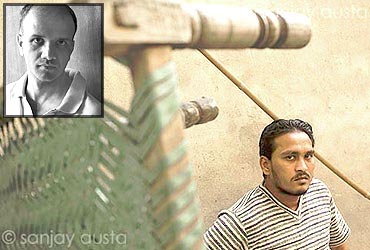


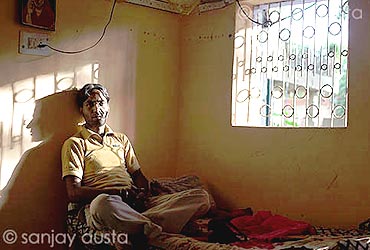


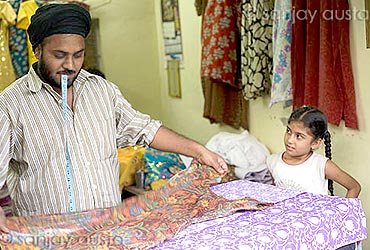
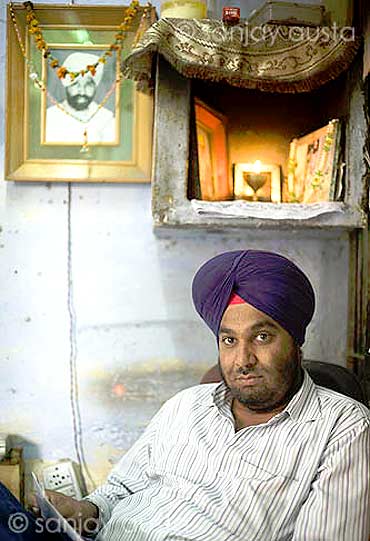
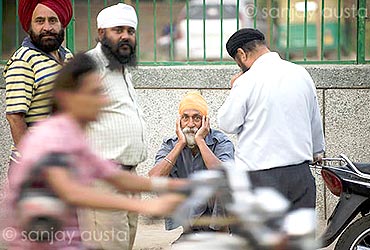
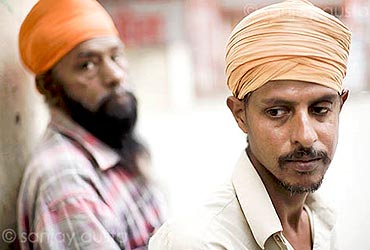
article